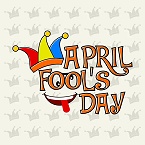History:
The origins of April Fool's Day go back a long way, and the exact date of its inception is unknown. However, there are many theories about how the tradition originated. One of the most common versions links Fool's Day to the transition to a new calendar. During the Middle Ages, many countries began using the Gregorian calendar, which was different from the old Julian calendar. Those who continued to celebrate New Year's Day in late March or early April (according to the old calendar) became the objects of various jokes and amusing performances.
Traditions:
Fool's Day is celebrated differently in different countries. In some places it is a time for cracking jokes and pranks, while in others it is a time for festivals and celebrations. Some of the most famous April Fool's pranks include placing fake ads, making up funny news stories in the media, and word games.
Fun facts:
In Sweden, April Fool's Day is called April Fools' Day and runs from April 1 to April 2.
In France, on April 1, children pin a fish on the backs of their friends and acquaintances as a symbol of cracking jokes.
In the UK, Fool's Day ends at noon. Those who play jokes after this time become the objects of jokes themselves.
Conclusion:
Fool's Day is a time when we can take a break from the seriousness of everyday life and enjoy some healthy humor. It is a day when we can be creative and fun while sharing joy with friends and family. No matter how you celebrate this day, the most important thing is not to forget that laughter makes our lives brighter and fuller. May Fool's Day bring you lots of fun and good mood!
Quick Search

Prices & Services
Letters from 2$
Fast Gift Delivery
2-way Video Chat
5 Membership Levels
View all rates
